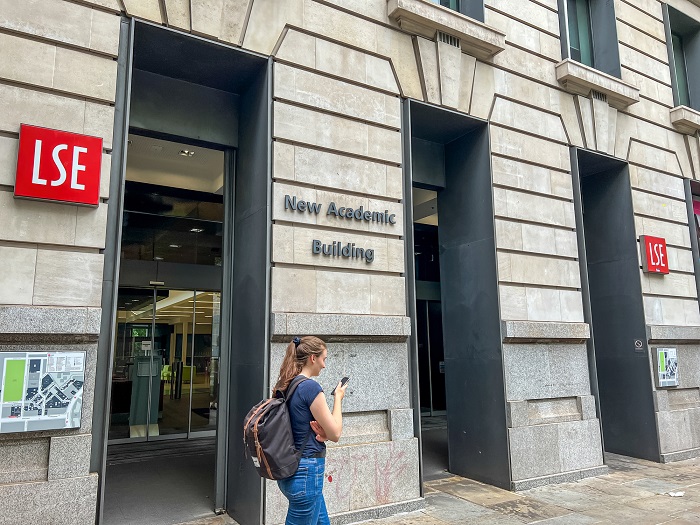economy news online news
By Beiyi Seow
US economic growth lost steam in the first quarter this year, said the Commerce Department on Thursday, as the possibility of a mild recession brews while consumer spending weakens. online news
Consumption has provided a boost to the world’s biggest economy, giving it a strong start to 2023, but recent banking sector turmoil and rising interest rates are likely to weigh on the outlook.
US gross domestic product rose at an annual rate of 1.1 percent in the January to March period, down from 2.6 percent in the fourth quarter last year.
“Compared to the fourth quarter, the deceleration in real GDP in the first quarter primarily reflected a downturn in private inventory investment and a slowdown in nonresidential fixed investment,” said the Commerce Department.
It added that this was partly offset by an acceleration in consumer spending and an upturn in exports.
The GDP growth figure “reflected increases in consumer spending, exports, federal government spending,” along with some forms of investment, said the department in a statement.
Economic activity has been easing as the US central bank rapidly hiked the benchmark lending rate to tackle stubborn inflation, while the full fallout from recent financial sector unrest –- following the failures of three midsized lenders last month -– is yet to be seen.
Dangerous to extrapolate
Retail sales had bounced in January, likely helped by mild weather, but Ian Shepherdson and Kieran Clancy of Pantheon Macroeconomics cautioned that “it would be dangerous” to extrapolate from apparent strength in the first three months.

February and March figures “revealed a lack of momentum, which we expect to persist in the second quarter,” they added in a note.
economy news online news
Consumers may have been willing to continue spending as they ate into pandemic-era savings, but the rate of rundown has slowed, Shepherdson and Clancy said.
Meanwhile, banking sector stress could bring tighter credit conditions, making it harder for households and businesses to get loans.
Recent unrest in the banking system and tighter lending standards is expected to result in a more severe recession than anticipated in the second quarter, though this will still be a mild downturn, Ryan Sweet of Oxford Economics told AFP ahead of the latest release.
“Our business cycle indicator shows the economy lost momentum in February and is close to turning negative,” he said.
While large American banks have emerged relatively unscathed from recent pressures, “the turmoil may not yet be over and uncertainty is high,” said Sweet.
“The economic costs have yet to be fully felt as banks are tightening lending standards and deposits at small banks have plunged,” he said.
bys/st
© Agence France-Presse. All rights are reserved.
economy news online news
Gross Domestic Product, First Quarter 2023 (Advance Estimate)
Real gross domestic product (GDP) increased at an annual rate of 1.1 percent in the first quarter of 2023 (table 1), according to the “advance” estimate released by the Bureau of Economic Analysis. In the fourth quarter, real GDP increased 2.6 percent.
The increase in real GDP reflected increases in consumer spending, exports, federal government spending, state and local government spending, and nonresidential fixed investment that were partly offset by decreases in private inventory investment and residential fixed investment. Imports, which are a subtraction in the calculation of GDP, increased (table 2).
Real GDP: Percent change from preceding quarter
The increase in consumer spending reflected increases in both goods and services. Within goods, the leading contributor was motor vehicles and parts. Within services, the increase was led by health care and food services and accommodations. Within exports, an increase in goods (led by consumer goods, except food and automotive) was partly offset by a decrease in services (led by transport). Within federal government spending, the increase was led by nondefense spending. The increase in state and local government spending primarily reflected an increase in compensation of state and local government employees. Within nonresidential fixed investment, increases in structures and intellectual property products were partly offset by a decrease in equipment.
The decrease in private inventory investment was led by wholesale trade (notably, machinery, equipment, and supplies) and manufacturing (led by other transportation equipment as well as petroleum and coal products). Within residential fixed investment, the leading contributor to the decrease was new single-family construction. Within imports, the increase reflected an increase in goods (mainly durable consumer goods and automotive vehicles, engines, and parts).
Compared to the fourth quarter, the deceleration in real GDP in the first quarter primarily reflected a downturn in private inventory investment and a slowdown in nonresidential fixed investment. These movements were partly offset by an acceleration in consumer spending, an upturn in exports, and a smaller decrease in residential fixed investment. Imports turned up.
Current‑dollar GDP increased 5.1 percent at an annual rate, or $327.9 billion, in the first quarter, to a level of $26.47 trillion. In the fourth quarter, GDP increased 6.6 percent, or $414.1 billion (tables 1 and 3).
The price index for gross domestic purchases increased 3.8 percent in the first quarter, compared with an increase of 3.6 percent in the fourth quarter (table 4). The PCE price index increased 4.2 percent, compared with an increase of 3.7 percent. Excluding food and energy prices, the PCE price index increased 4.9 percent, compared with an increase of 4.4 percent.
Personal Income
Current-dollar personal income increased $278.9 billion in the first quarter, compared with an increase of $398.8 billion in the fourth quarter (table 8). The increase in the first quarter primarily reflected increases in compensation (led by private wages and salaries) and government social benefits.
Disposable personal income increased $571.2 billion, or 12.5 percent, in the first quarter, compared with an increase of $403.0 billion, or 8.9 percent, in the fourth quarter. The increase in the first quarter reflected an increase in personal income and a decrease in personal current taxes.
Real disposable personal income increased 8.0 percent in the first quarter, compared with an increase of 5.0 percent in the fourth.
Personal saving was $946.2 billion in the first quarter, compared with $758.8 billion in the fourth quarter. The personal saving rate—personal saving as a percentage of disposable personal income—was 4.8 percent in the first quarter, compared with 4.0 percent in the fourth.
Source Data for the Advance Estimate
The GDP estimate released today is based on source data that are incomplete or subject to further revision by the source agency. Information on the data and key assumptions used in the advance estimate is provided in a Technical Note and a detailed “Key Source Data and Assumptions” file posted with the release. The “second” estimate for the first quarter, based on more complete data, will be released on May 25, 2023. For information on updates to GDP, refer to the “Additional Information” section that follows.
economy news online news


